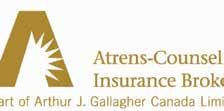
9 minute read
There’s No ‘Eye for an Eye’ in Team
THERE IS NO ‘EYE FOR AN EYE’ IN TEAM
Most condominium boards have an odd number of directors for a reason.
Advertisement
BY MARC BHALLA
While some strive to achieve it, it is not necessary for every board decision to
be unanimous. In fact, a split vote can often be the sign of a healthy operation — where multiple views are considered, members can agree to disagree and move on.
Trouble occurs when boards are unable to conduct business, stuck at a standstill on a split vote, or when grudges are held over past votes. When directors use their vote to retaliate against one another, it is difficult to see how the community can be put first. Often, troubles arise when things get personal between directors.
Members of a condominium board do not need to be friends. They do need to find a way to co-exist. From several mediations conducted to address condominium board “in-fighting”, here are some observations of how a board can operate effectively as a team:
Develop a shared understanding of how business will be conducted
To be clear, this is not imposing an existing structure upon new board members without their input. It is most successful when the process engages all directors to design and agree to a framework. It can be most effective when it is not considered with a
particular board decision in mind but as a general, high-level approach that considers questions such as: a. What will the board do when there are different views amongst directors? b. How can all directors feel heard? c. How can the board make a decision and move on?
Typically, this involves striking a balance that affords time to dissenters while also allowing for decision-making to take place. This shared understanding should also spell out how dissenting voices can be acknowledged to offer guidance when a split vote occurs and prevent conflict arising about how to go about this. friendly disagreement to assigning leadership roles to a director frequently on the losing side of votes.
The concept is to create a board culture that discourages lingering hard feelings and lets everyone feel included and that they are doing their part. It often ultimately comes down to inviting the sharing of different perspectives so all feel part of decisionmaking, regardless of the outcome, and valued even when votes do not go their way.
Take confidentiality seriously
It is often preached but not always practiced. Board members have access to sensitive and privileged information that they are not supposed to share outside of the board, including with the non-board Agree to disagree members they are closest to. Preserving From personal observation, this has been the confidentiality of the role allows implemented in a number of ways— from directors to have something in common. demonstration by a board president who It can help establish trust. I have mediated would routinely ensure to be outvoted on disputes between several boards that fall DelProperty_Condo_March_2018_torevise.pdf 1 2018-04-13 2:44 PMapart because trust among their members certain decisions to maintain a culture of has broken down. Establishing trust is not always easy but goes a long way.
A starting point in managing conflict in any setting is surfacing what parties have in common and working from there to positively collaborate in everyone’s interest. On paper, that should be easy enough to do on a condominium board comprised of people with a shared investment, volunteering their time in the spirit of community.
In practice, it is not always that easy — particularly when difficult decisions have to be made. Making decisions as a team and standing together as a team is a key component to success. Rather than waiting until differences of opinion surface, it can be helpful for boards to develop shared understandings of how they will navigate their challenges before they face them. 1
Marc Bhalla, LL.M. (DR), C.Med, C.Arb, is a mediator and arbitrator. He can be reached at mbhalla@elia.org.

20
50
18




Freehold and lot line condos: WHICH INSURANCE DO YOU NEED?
It’s a common scenario: a homebuyer purchases what appears to be a regular townhome only to be told it classifi es as a “freehold condominium.” This can be a confusing descriptor, but it technically holds true. The term “freehold” is frequently used as a marketing strategy to suggest purchasers are getting more than they would ordinarily receive when buying a unit, such as a front or back yard. That being said, a more accurate term for these types of condominiums would be a “lot line” condominium where the owner’s unit includes not just the building but also a portion of the land surrounding it.
Regardless of the marketing terms used to describe your condo unit, when you are setting up your personal insurance you should be most concerned if your condo is classifi ed as a standard registration and what is indicated in your condominium’s unique standard unit description.
It is important to note that the most common kind of condo registration in the province of Ontario is a standard registration. If a condominium is not described as a “Common Element Condominium” or a Vacant Land Condominium” within the registered name of your condominium, then it is highly likely it is a standard registration condo.
WHO INSURES A FREEHOLD?
Freehold or lot line condos carry unique maintenance obligations, and this is where confusion over insurance can set in. Specifi cally, freehold or lot line condo declarations often hold owners more responsible for the ongoing repair and maintenance of lot elements (e.g., roof, building envelope, driveway, trees, etc.).
Reading this, owners then might assume that they need insurance to cover any sudden or accidental damage that occurs on their lot, but that is often not the case. In truth, the Condominium Act of Ontario states that if a condominium is a “standard registration condominium,” then the condominium corporation is required to insure the common elements and the units, but not any improvements to the units. That includes the actual homes and any other common corporation property such as curbs, roadways, and light standards. Moreover, condominium corporations must insure a basic level of fi nishes within each home, as described by the condominium’s standard unit bylaw. As such, it is critical to pay attention to your corporation’s standard unit bylaw to understand what materials and fi nishes are considered part of a standard unit, and thus insured by the condo. Anything over and above those standard fi nishes and materials need to be







insured by the owner under a condo unit owner policy and are commonly referred to as betterments or improvements.

THE RIGHT POLICY
One question we get from owners of freehold or lot line condos is “What kind of insurance do I need?” The answer is that you should not be purchasing a standard home insurance policy, but rather a condominium unit owners’ insurance policy. This requires bringing a copy of your standard unit bylaw to your insurance broker and understanding what’s covered.
Overall, anything inside your unit that is not described in the standard unit bylaw is your responsibility to insure. As such, you should be sure to include the replacement value of any of those fi nishes or features (over and above what is listed in the bylaw) within your own betterments limit of insurance in your unit owners’ insurance policy.
To review, condominium unit owners are responsible for the following: • Personal Property: such as furniture, clothing, appliances, electronics, any moveable property within the unit, all personal effects stored in lockers, etc. • Improvements or Betterments: such as moldings, lighting, fl ooring, upgraded cabinetry, and anything over-and-above what is described in the standard unit bylaw. • Additional Costs to Live Elsewhere: if your unit is so badly damaged that you cannot occupy it until repairs are complete. • Personal Liability: condo owners are legally liable for any bodily injury or property damage arising out of their personal activities as a unit owner and from the ownership of your individual property. • Charge Back of Corporation Deductible: unit owners may be responsible for the deductible under the Corporation’s
Insurance Policy if the corporation has a bylaw that dictates this, or if the owner’s act or omission results in damage to any property the corporation is responsible for insuring. • Loss Assessment Coverage: if there is a major property or liability event that results in a shortfall in your condominium corporation insurance, you may be personally assessed as a unit owner. • Additional Unit Owner Protection: a unit owner policy should contain additional contingent protection to cover grey areas between the condo’s insurance and your own. • Special Limits and Extensions of Coverage: there may be other special limits of coverage required for jewelry, bicycles, sewer backup, and other exposures that may exist.
Your condo’s standard unit bylaw, like many others, may also indicate that the unit owner must insure all of their fl oor coverings. If this is the case, be sure to include the replacement cost of all fl oors above the sub-fl oor within your betterments limit of your own policy as well.


AVOID MISMATCHED POLICIES
If you purchase a regular homeowners policy to insure your property in a standard registration condo, you are making a big mistake. Not only will you have double coverage for a lot of the property that your condo already insures, but you could also be paying up to four times what you would for a condo unit owner’s policy. Additionally, you will be missing key elements of coverage that you need, based on exposures you have as a condominium unit owner.
IT PAYS TO GET ADVICE
The insurance requirements for a condo unit owner can be complex depending on the unit owner’s needs and their specifi c condominium bylaws. That’s why we strongly recommend working with an insurance broker that understands the complexities of condominium insurance and can recommend the right protection for you.



